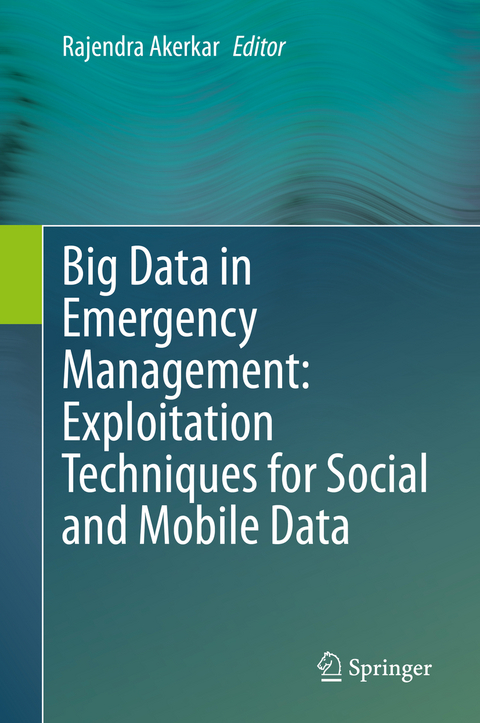
Big Data in Emergency Management: Exploitation Techniques for Social and Mobile Data
Springer International Publishing (Verlag)
978-3-030-48098-1 (ISBN)
Emergencies are severe, large-scale, non-routine events that disrupt the normal functioning of a community or a society, causing widespread and overwhelming losses and impacts. Emergency Management is the process of planning and taking actions to minimize the social and physical impact of emergencies and reduces the community's vulnerability to the consequences of emergencies. Information exchange before, during and after the disaster periods can greatly reduce the losses caused by the emergency. This allows people to make better use of the available resources, such as relief materials and medical supplies. It also provides a channel through which reports on casualties and losses in each affected area, can be delivered expeditiously. Big Data-Driven Emergency Management refers to applying advanced data collection and analysis technologies to achieve more effective and responsive decision-making during emergencies.
Researchers, engineers and computer scientists working in Big Data Emergency Management, who need to deal with large and complex sets of data will want to purchase this book. Advanced-level students interested in data-driven emergency/crisis/disaster management will also want to purchase this book as a study guide.
Rajendra Akerkar holds master's in applied mathematics and doctorate in computer science. He is the professor and head of Big Data Research Group at Vestlansforsking (Western Norway Research Institute), Norway. His research and teaching experience includes over 28 years in the Academia spanning universities in Asia, Europe and North America. His research focuses on application of big data methods to real world challenges, particularly transport, public security, energy and utilities. He is actively involved in several international ICT initiatives for more than 22 years.
1. Introduction to Emergency Management.- 2. Big Data.- 3. Learning Algorithms for Emergency Management.- 4. Knowledge Graphs and Natural-Language Processing.- 5. Social Media Mining for Disaster Management and Community Resilience.- 6. Big Data-Driven Citywide Human Mobility Modeling for Emergency Management.- 7. Smartphone based Emergency Communication.- 8. Emergency Information Visualisation.
| Erscheinungsdatum | 16.09.2020 |
|---|---|
| Zusatzinfo | XVIII, 183 p. 97 illus., 79 illus. in color. |
| Verlagsort | Cham |
| Sprache | englisch |
| Maße | 155 x 235 mm |
| Gewicht | 463 g |
| Themenwelt | Mathematik / Informatik ► Informatik ► Datenbanken |
| Informatik ► Software Entwicklung ► Mobile- / App-Entwicklung | |
| Schlagworte | big social data • Disaster data mining • Emergency behaviour • emergency communication • emergency management • Information Visualisation • machine learning • Mobile data analysis • situational awareness • Social Media Analysis |
| ISBN-10 | 3-030-48098-4 / 3030480984 |
| ISBN-13 | 978-3-030-48098-1 / 9783030480981 |
| Zustand | Neuware |
| Haben Sie eine Frage zum Produkt? |
aus dem Bereich


